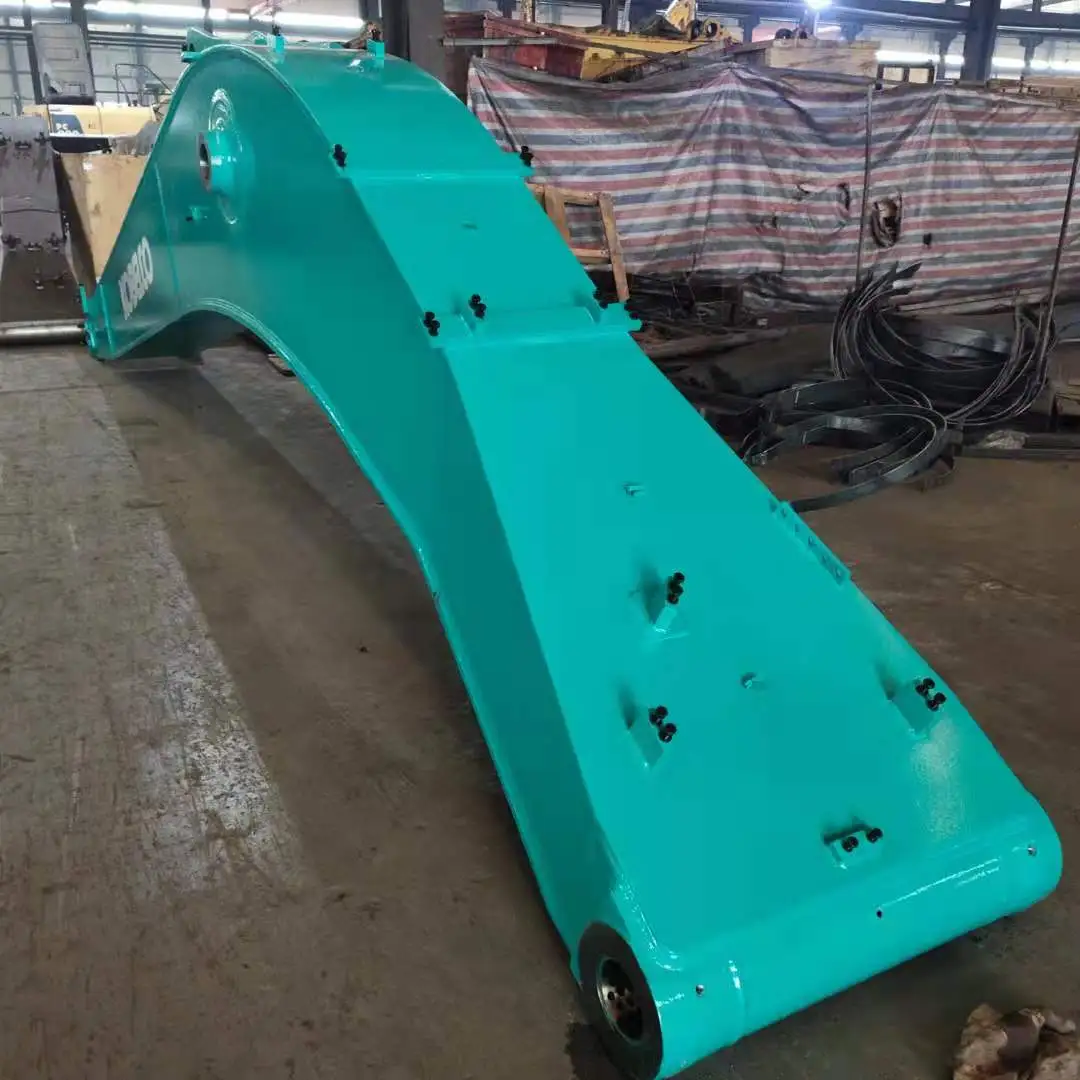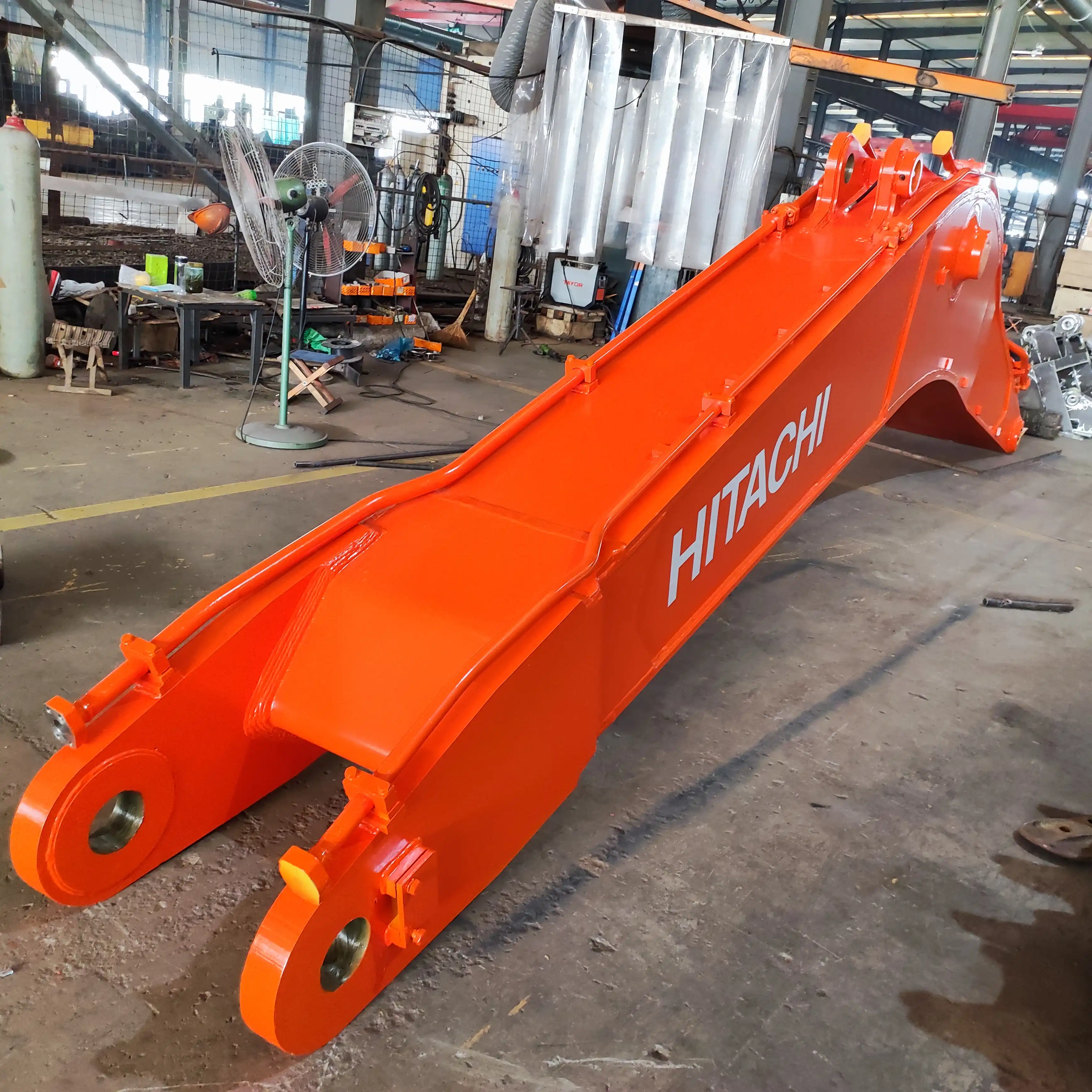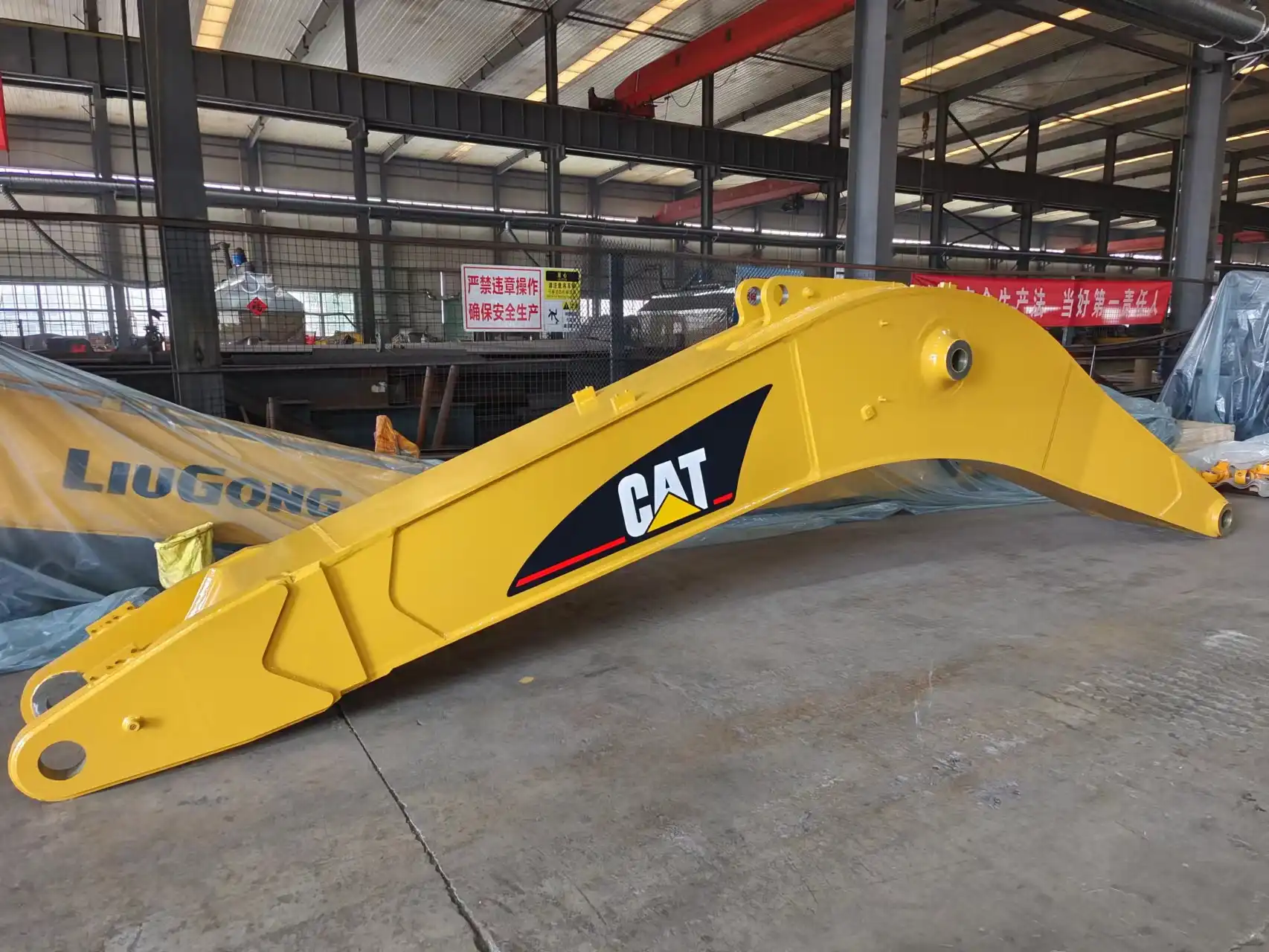Excavator Boom Length
Excavator boom length is a critical factor that determines the overall reach, digging depth, and operational capability of an excavator. The standard size excavator boom configurations vary significantly across different machine classes, ranging from mini excavators used in confined urban spaces to massive mining excavators deployed in large-scale operations. These components form the essential linkage system that enables excavators to perform their core functions effectively. Whether you're involved in railway construction, mining operations, demolition projects, or general construction work, understanding the proper dimensions and configurations of excavator booms and arms is crucial for optimizing performance, ensuring safety, and maximizing productivity on your worksite.
When selecting the appropriate excavator for your specific application, the boom and arm length must align with your project requirements. Standard excavator booms typically range from 1.5 meters for compact machines to over 9 meters for heavy-duty equipment, while arms generally measure between 1.2 meters and 6 meters depending on the machine size class. These dimensions create various working envelopes that directly impact the excavator's reach, dig depth, and lifting capacity.
Common Types And Characteristics Of Boom Length

Standard Mono Booms
The standard mono boom represents the most common configuration found on excavators across various size classes. This single-piece design provides an excellent balance of strength, stability, and versatility for general excavation tasks. Standard mono booms typically feature a curved design that optimizes both the digging arc and the machine's reach capabilities.
For compact excavators (1-6 tons), mono booms generally measure between 1.5-3.5 meters, while mid-sized machines (7-25 tons) utilize booms ranging from 3.7-5.7 meters in length. Heavy-duty excavators (26-90+ tons) employ substantially longer booms measuring between 6-9+ meters to accommodate their increased operational requirements. The standard mono boom configuration works exceptionally well for trenching, general earthmoving, and material handling applications where consistent performance is essential.
Two-Piece Booms (Knuckle Booms)
Two-piece articulated booms, often called knuckle booms, feature an additional hydraulic joint that significantly enhances the excavator's versatility and maneuverability. This design allows for improved operation in confined spaces and provides greater flexibility in positioning the excavator arm. The additional articulation point enables operators to work closer to the machine's undercarriage while maintaining excellent reach capabilities.
Two-piece booms typically add 15-20% more working range compared to standard mono booms of similar dimensions. This configuration excels in urban construction environments, utility work, and landscaping applications where precision and adaptability are paramount. The enhanced articulation also improves the machine's ability to work around obstacles and reach over barriers that would otherwise impede operational efficiency.
Long Reach Booms
Long reach booms represent specialized configurations designed for applications requiring extended reach capabilities beyond what standard equipment can provide. These booms can extend the excavator's working range by 30-100% compared to standard configurations, making them ideal for dredging operations, slope formation, and work across water bodies or other obstacles.
The extended length of these booms, which can measure up to 18-30 meters in total when combined with their compatible arms, comes with trade-offs in lifting capacity and material handling capabilities. Their specialized design requires additional counterweights and structural reinforcements to maintain machine stability during operation. Long reach configurations are commonly used in river maintenance, demolition of tall structures, and large-scale land reclamation projects where distance from the worksite is a critical factor.
Impact Of Boom Length On Excavator Performance

Reach And Digging Depth
The boom length directly influences an excavator's maximum reach and digging depth capabilities, which are primary performance indicators for these machines. Longer boom configurations extend the machine's working radius, allowing operators to cover more area without repositioning the excavator. This extended reach translates to improved productivity in applications such as ditch digging, material loading, and general earthmoving operations.
For every meter increase in boom length, an excavator typically gains approximately 0.8-0.9 meters in horizontal reach and 0.6-0.7 meters in digging depth, though these values vary based on the specific geometry of the machine. A mid-sized excavator (20-ton class) with a standard size excavator boom configuration typically achieves a maximum reach of 9-10 meters and a digging depth of 5-6.5 meters. Understanding these specifications is essential for matching the right machine to specific project requirements and ensuring optimal operational efficiency.
Lifting Capacity And Stability
Boom length significantly impacts an excavator's lifting capacity and overall stability during operation. As boom length increases, the maximum safe lifting capacity decreases due to basic principles of physics and leverage. This relationship creates an important balance that operators and project managers must consider when selecting equipment for specific applications.
Longer booms create greater leverage forces that must be counterbalanced by the excavator's counterweight and undercarriage stability systems. For instance, increasing boom length by 20% typically reduces lifting capacity by 15-25% at extended reaches. This reduction becomes particularly significant in applications requiring heavy lifting operations, such as pipe placement, concrete structure installation, or material handling tasks. Proper understanding of these limitations ensures safe operation and prevents potential equipment damage or safety hazards.
Fuel Efficiency And Operational Costs
The length and configuration of an excavator's boom system directly impact the machine's fuel consumption patterns and overall operational costs. Longer booms require more hydraulic power to operate effectively, particularly during lifting operations and when managing the increased weight of extended components. This increased power demand translates to higher fuel consumption rates during operation.
On average, excavators with longer boom configurations consume 5-15% more fuel compared to standard configurations when performing identical tasks. This increased consumption must be factored into project cost estimates and equipment selection decisions. However, the operational efficiency gained through extended reach capabilities often offsets these additional costs in applications where machine repositioning would otherwise be frequently required. Proper operator training and implementation of fuel-efficient operating techniques can further mitigate these increased consumption patterns.
Design Of Boom Length

Materials And Structural Considerations
The design and construction materials used in excavator booms represent a critical balance between strength, weight, and durability. Modern excavator booms typically utilize high-strength, low-alloy (HSLA) steel with yield strengths ranging from 50,000-80,000 psi, depending on the machine class and intended application. These specialized steel alloys provide excellent stress resistance while maintaining manageable weight characteristics.
The cross-sectional design of booms has evolved significantly over time, with most contemporary models utilizing a box-section or D-section profile that maximizes structural integrity while minimizing material weight. These designs incorporate strategic reinforcement at high-stress points, particularly around pin joints and hydraulic cylinder mounting locations. The thickness of boom walls typically ranges from 8-25mm depending on the machine size class, with larger machines utilizing substantially thicker materials to handle increased operational stresses.
Hydraulic Systems And Articulation
The hydraulic systems that power excavator boom movements represent sophisticated engineering solutions designed to provide precise control, optimal power transmission, and operational reliability. Modern excavator boom hydraulic systems typically operate at pressures ranging from 4,500-5,500 psi (310-380 bar), delivering the tremendous force required for digging and lifting operations through strategically sized cylinders.
Boom articulation points utilize hardened steel pins with diameters ranging from 50-300mm depending on machine size, with these components supported by specialized bushings or bearing systems designed for high-load applications. The hydraulic cylinders that power boom movements are sized according to the required force output, with bore diameters typically ranging from 80-200mm for standard configurations. Advanced hydraulic control systems incorporate pressure-compensated valves, load-sensing capabilities, and electronic management systems that optimize performance while maximizing fuel efficiency during operation.
Customization And Specialized Applications
The growing demand for application-specific excavator configurations has driven significant advancements in boom customization options across the industry. Manufacturers now offer a wide range of specialized boom designs engineered for particular operational environments and task requirements beyond standard excavation work.
Demolition-specific booms incorporate additional protective features and may include three or more articulation points to provide the extreme flexibility required for precise structural dismantling. Forestry applications often utilize booms with reinforced designs and integrated protection systems to withstand the unique challenges of woodland operations. For railway maintenance applications, specialized booms feature modified geometries that accommodate the constraints of working alongside tracks while maintaining necessary reach capabilities. These customized solutions enhance productivity and operational efficiency in specialized applications where standard configurations would prove inadequate.
FAQ
①What is the standard boom length for a 20-ton excavator?
A standard 20-ton excavator typically features a boom length between 5.2-5.7 meters, which provides an effective balance between reach capability and lifting capacity for general construction applications.
②How does boom length affect excavator stability?
Longer booms create greater leverage forces during operation, particularly at extended reaches, which reduces overall machine stability. Manufacturers compensate for this by incorporating larger counterweights, wider undercarriages, or recommending operational restrictions for extended configurations.
③Can excavator booms be modified after purchase?
While possible, aftermarket boom modifications should only be performed by qualified engineers with manufacturer approval, as changes to boom length or configuration affect the machine's structural integrity, hydraulic system requirements, and overall operational safety.
④What is the best boom length for demolition work?
Demolition applications typically benefit from shorter, stronger boom configurations with multiple articulation points rather than maximum length. These configurations provide better control, enhanced tool positioning capabilities, and improved durability in high-stress demolition environments.
Contact Information
Understanding the specifications and capabilities of standard-size excavator boom configurations is essential for optimizing equipment selection and operational efficiency across various industrial applications. From compact urban construction projects to massive mining operations, the proper boom length directly impacts productivity, operational costs, and project timelines. Whether you're involved in railway construction, demolition work, or general earthmoving operations, selecting the appropriate boom configuration ensures your equipment can meet the specific demands of your project while maintaining optimal performance and safety standards.
The continuous advancement in boom design, materials, and hydraulic systems continues to expand the capabilities of modern excavators, providing operators with unprecedented reach, precision, and versatility. By carefully evaluating your specific operational requirements against the available boom options, you can maximize your equipment's effectiveness and achieve optimal results across diverse working environments.
For more information about standard size excavator boom configurations or to discuss your specific excavator attachment needs, please contact our technical team at arm@stnd-machinery.com. TianNuo Machinery specializes in manufacturing high-quality excavator components including booms, arms, buckets, and specialized attachments designed to enhance your equipment's performance and productivity.
References
Johnson, R.M. (2023). "Advanced Hydraulic Systems in Modern Excavator Design." Construction Equipment Engineering Review, Vol. 45, pp. 112-128.
Zhang, L. & Williams, T. (2024). "Structural Analysis of High-Strength Materials in Excavator Boom Applications." International Journal of Heavy Equipment Engineering, Vol. 12, pp. 87-103.
Thompson, K.L. (2023). "Operational Efficiency Comparisons Across Various Excavator Boom Configurations." Heavy Equipment Technology Quarterly, Vol. 18, pp. 202-215.
Nakamura, H. & Brown, S. (2024). "Materials Science Advancements in Modern Construction Equipment." Journal of Construction Engineering Materials, Vol. 31, pp. 156-172.
Anderson, P.J. (2024). "Performance Metrics and Operational Considerations for Excavator Selection." Construction Management and Economics, Vol. 42, pp. 318-331.
About Author: Arm
Arm is a leading expert in the field of specialized construction and railway maintenance equipment, working at Tiannuo Company.

